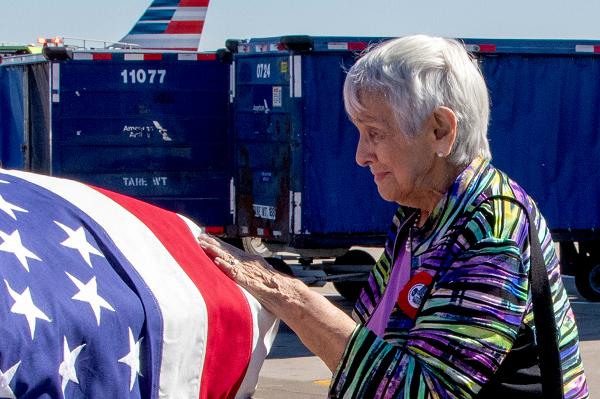
Chicago, Illinois. (October 11, 2024): Another of America’s greatest generation has finally made it home after nearly 84 years. In this photo by Barbara Wilson, Rosemarie Dillon, the 89-year-old niece of Army National Guard Private First Class Harry Jerele touches his flag-draped casket at O'Hare International Airport. Jerele was a World War II prisoner of war who died in captivity in 1943 and whose remains had recently been identified. Rosemarie Dillon was 5 years old when Jerele went overseas.
A member of the Illinois Army National Guard, PFC Jerele served with Company B of the 192nd Tank Battalion in the Pacific. In the summer 1942, Japanese forces invaded the Philippine Islands and despite a ferocious defense thousands of American troops, including Jerele, surrendered. What followed was one of the worst war crimes in history. Thousands of American and Filipino prisoners were subjected to an ordeal that came to known as the infamous Bataan Death March. The Japanese marched sick and wounded prisoners through sixty-five miles of steaming jungle, bayoneting those who fell behind. The survivors were incarcerated at the Cabanatuan POW camp where some 2,500 POW died during the war.
According to prison camp and other historical records, Jerele died of pneumonia on December 28, 1942, and was buried along with other prisoners in a mass grave designated #804. The remains of those buried at #804 were exhumed and relocated to the U.S. military mausoleum near Manila in 1947.
This past December, military scientists used DNA analysis to match samples provided by the family and PFC Jerele finally made it home.


